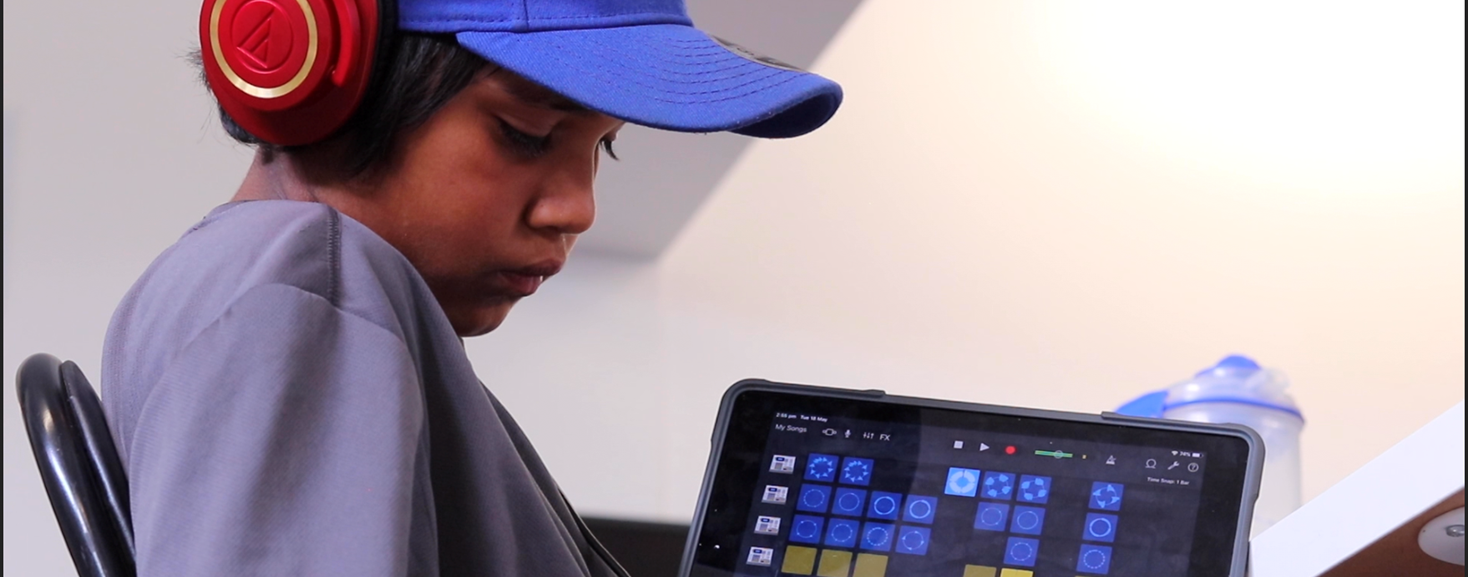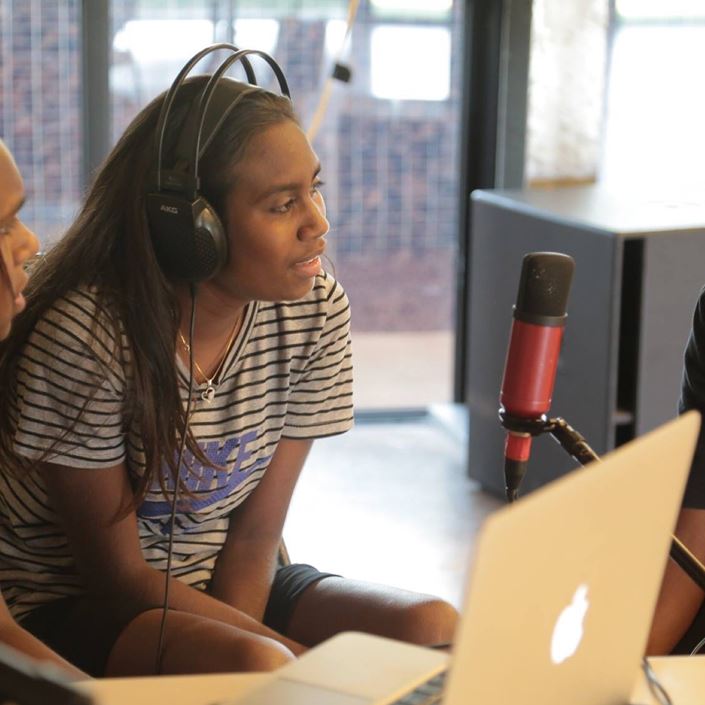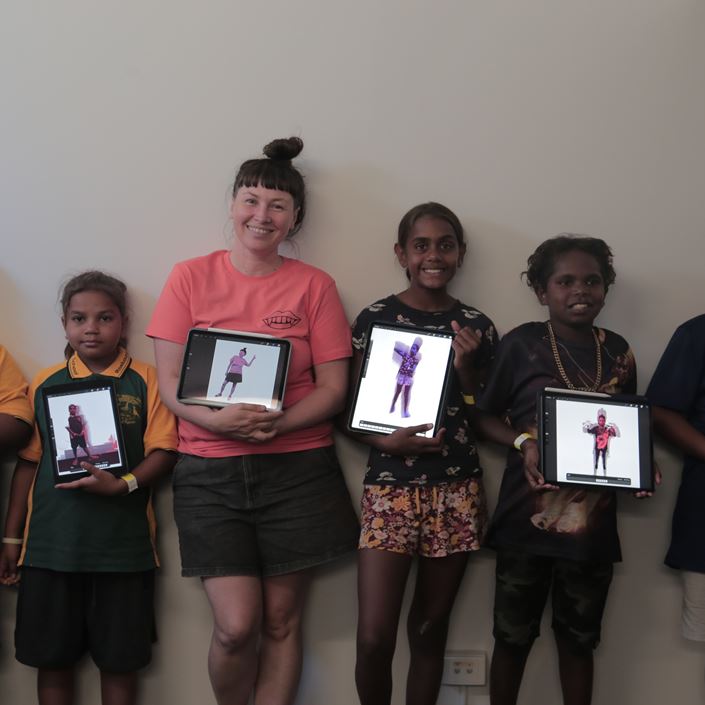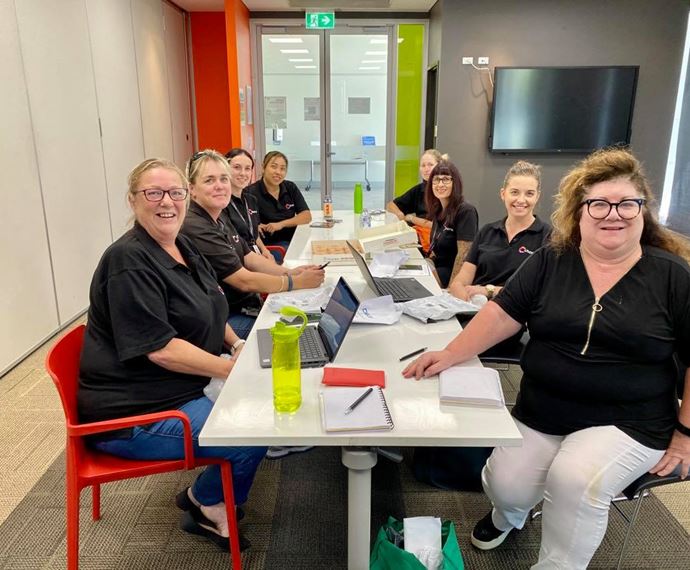Supporting digital inclusion and literacy in young people
Big hART is an arts and social change organisation that aims to create social impact through art and storytelling. Focused on justice and disadvantage, Big hART works to maximise impact by providing a voice for marginalised communities. Lotterywest has provided support to the organisation through multiple grants totalling approximately $780,000 since 2013. One of these grants supported Big hART to improve digital inclusion and literacy in Roebourne through a two-year creative digital education project for local young people.
To improve digital inclusion and literacy in Roebourne through a two-year creative digital education project for local young people.
Big hART
7/1/2018
$1,303,960
Lotterywest
$325,000
Pilbara
Aboriginal and Torres Strait Islander people, Young people (aged 13-17)
- Increased school engagement and employment outcomes.
- Strengthened sense of identity and place.
- Reinforced intergenerational ties.
- Having clear indicators of success and measuring change helped to create a strong case for why digital inclusion initiatives are effective.
- Big hART was able to track trends with educational attainment and employment pathways, as well as observing developments in safety, wellbeing, and leadership.
- Designing in partnership with the community made the participants more comfortable, ensured they were culturally safe and supported by their community, and strengthened the project’s connection to the wider community.
- The project demonstrates the value of locating individual projects within a long-term strategic plan to address structural disadvantage, allowing the organisation to build upon acquired knowledge and skills over time.
- After a year of delivery, it was identified there was need to balance digital and physical engagement.
- Increased focus on digital took the attention away from physical activity, normally a key feature of Big hART workshops.
- Many young people in Roebourne live with the impacts of lived and intergenerational trauma, experience has shown there are positive mental health impacts when kids are being physical.
Opportunity
In WA, approximately 12 per cent of households do not have internet access, and digital inclusion scores notably decline as you move from the Perth metro and South West region to regional areas [1]. There is no adequate documentation of the problems Indigenous people in remote and regional areas face for digital inclusion, but it is apparent that inclusion diminishes with distance [1].
For young people living in regional and remote areas of WA, education and employment opportunities can be scarce, and technological skills are highly valued. In Roebourne, educational attainment levels are below the State average, with around 19 per cent of the population reporting the highest level of education as year nine or below as compared to around 6 per cent across Western Australia [2].
The digital space can provide a potent and dynamic avenue for education and social justice [3]. Research has shown that using digital mediums to tell the stories of marginalised communities can strengthen their social status and improve social inclusion through increased visibility [4].
Approach
Big hART has worked with the Roebourne community since 2011. As a result of the relationships and trust they've built, they were well placed for a Lotterywest grant to create opportunities for young people. The grant for $325,000 allowed Big hART to pursue two main activities:
- Establishing the ‘Digital Lab’, equipped with current technology in a space that was appropriate and inclusive for the young people of Roebourne; and
- Begin delivery of the Digital Workshop Program to equip young people with the skills and confidence to use technology creatively.
Digital Lab
The Digital Lab provides the local community with access to technology that had previously been out of reach. Big hART chose to make the space welcoming and safe for young people by including couches and a chill out area. They provided a mix of different technologies, both fixed and mobile, providing flexibility to engage with young people who may thrive in less structured environments, especially those who have been disconnected from formal education.
The technology included iMacs, iPads, cameras and camcorders, Mavik DJI Drone Cameras, Zoom audio recorders, and GoPro Cameras with accessories.
Digital Workshop Program
The Digital Workshop Program paired young people with mentors to provide guidance through technology and content creation including film and audio production, photography, animation, digital drawing, music, editing, coding, and augmented reality.
Big hART involved local Elders in the Digital Workshop Program, to observe the work of young people in a casual environment. This enabled the formation of relationships and greater connection between young people and Elders, and the cross-pollination of ideas as the students pursued their creative projects.
Impacts and outcomes
The program delivered impact on several levels including:
- Increased school engagement.
- Employment outcomes.
- Increased feelings of empowerment through digital capabilities.
- Strengthened sense of identity and place.
- Reinforced intergenerational ties.
- Wider community impact.
- Positive media coverage about Roebourne.
- In July 2020, the Digital Lab completed its residency at the Ngurin Pilbara Cultural Centre and moved to a new space in partnership with Ngarliyarndu Bindirri Aboriginal Corporation.
“The Digital Lab and Workshops have encouraged younger generations to continue with their school and look for greater challenges in life.”
Allery Sandy, Yindjibarndi Elder



What worked
Having clear indicators of success and measuring change
Measuring change has helped to create a strong case for why digital inclusion initiatives are effective. Education is a good predictor of multiple wellbeing outcomes including community participation, connectedness, mental health, and leadership. Big hART was able to track trends with educational attainment and employment pathways, as well as observing developments in safety, wellbeing, and leadership.
Designing in partnership with the community
Big hART ensured each element of the Digital Lab met the needs of young people – from its design, look and feel, to the nature of workshops. Involving Elders meant that some workshops could be completed on country. This made the participants more comfortable, ensured they were culturally safe and supported by their community, and strengthened the project’s connection to the wider community.
Looking for broader opportunities for impact
Aboriginal and Torres Strait Islander histories are mandated across school curriculums in Australia, however 99 per cent of teachers are non-indigenous. Young people in Roebourne used the Digital Lab to ‘teach the teacher’, producing unique indigenous teaching materials via a new online resource, NEO-Learning. Teachers across the country now have access to these resources.
Yindjibarndi cultural leader Michelle Adams explains, “NEO-Learning flips the narrative of growing up Aboriginal - from problem to strength.” This experience shows the value of locating individual projects within a long-term strategic plan to address structural disadvantage, allowing the organisation to build upon acquired knowledge and skills over time.
Key challenges
Balancing digital and physical engagement
The opening of the Digital Lab brought an increased focus on the digital arts and building skills, allowing young people to walk proudly in two worlds. The feedback from young people has been positive with enthusiasm for the space and workshops. After the first year however, the project team reflected that this growing focus on digital had taken the attention away from physical activity, a key feature of Big hART workshops. With many young people in Roebourne living with the impacts of lived and intergenerational trauma, experience has shown there are positive mental health impacts when kids are being physical. Big hART has since made a strong effort to balance digital work with physical engagement such as stretching, percussion sessions, movement workshops and plenty of on-country trips. Together the outcomes in terms of well-being and creativity are complementary.
REFERENCES
- Thomas, J., et al., Measuring Australia’s digital divide: The Australian digital inclusion index 2020. 2020, RMIT and Swinburne University of Technology, Melbourne, for Telstra.
- Australian Bureau of Statistics. 2016 Census QuickStats: Roebourne. 2017; Available from: https://quickstats.censusdata.abs.gov.au/census_services/getproduct/census/2016/quickstat/SSC51294#:~:text=In%20Roebourne%20(State%20Suburbs)%2C%2044.7%25%20of%20people%20were,a%20tertiary%20or%20technical%20institution.
- O'Byrne, W., Educate, empower, advocate: Amplifying marginalized voices in a digital society. Contemporary Issues in Technology and Teacher Education, 2019. 19(4): p. 640-669.
- Moutafidou, A. and T. Bratitsis. Digital storytelling: giving voice to socially excluded people in various contexts. in Proceedings of the 8th International Conference on Software Development and Technologies for Enhancing Accessibility and Fighting Info-exclusion. 2018.
Learn about wellbeing
Understand how your community is going to help you to better target and plan your project.
Ready to plan your project?
Understand your vision, plan your impact and report on the outcomes of your project with three easy interactive tools in the Community Impact Planner.
Acknowledgement of Country
The Western Australian Community Impact Hub acknowledges and pays respect to the Traditional Owners of the land on which we are based, the Whadjuk people of the Noongar Nation and extends that respect to all the Traditional Owners and Elders of this country. We recognise the significant importance of their cultural heritage, values and beliefs and how these contribute to the positive health and wellbeing of the whole community.

![Spacecubed Photo 3[1]](/media/qepmnzdj/spacecubed_photo_3-1.jpg?center=0.78033077899887282,0.57733025667655247&mode=crop&width=690&height=570&rnd=133189380669400000&quality=80)